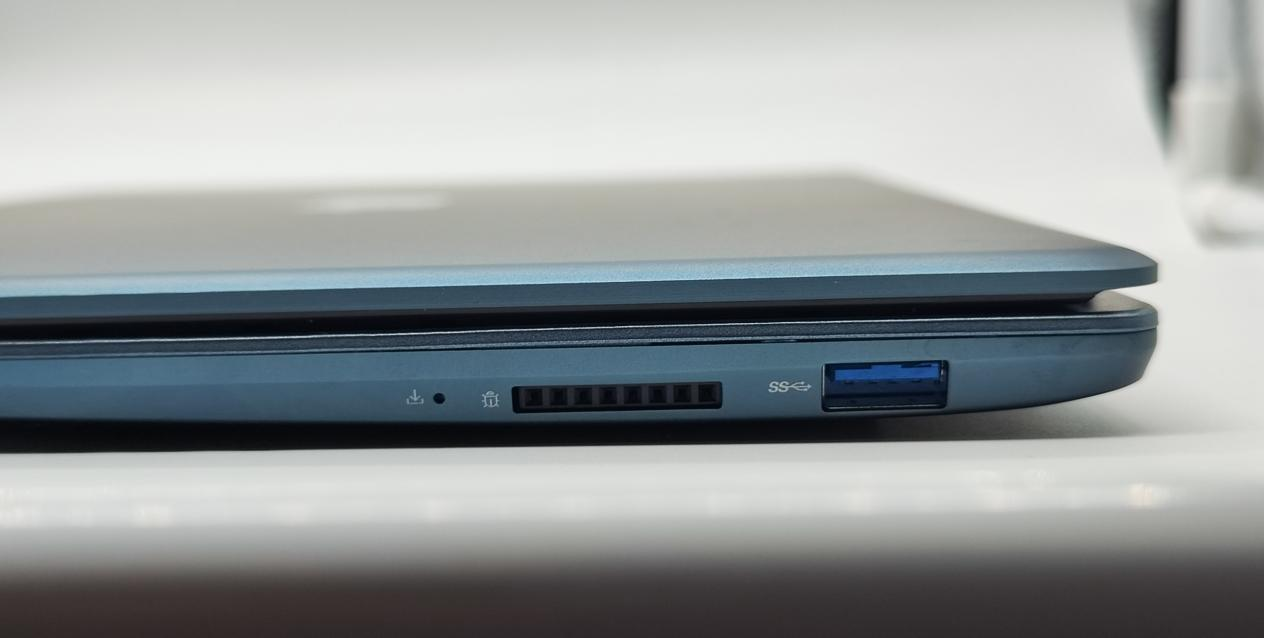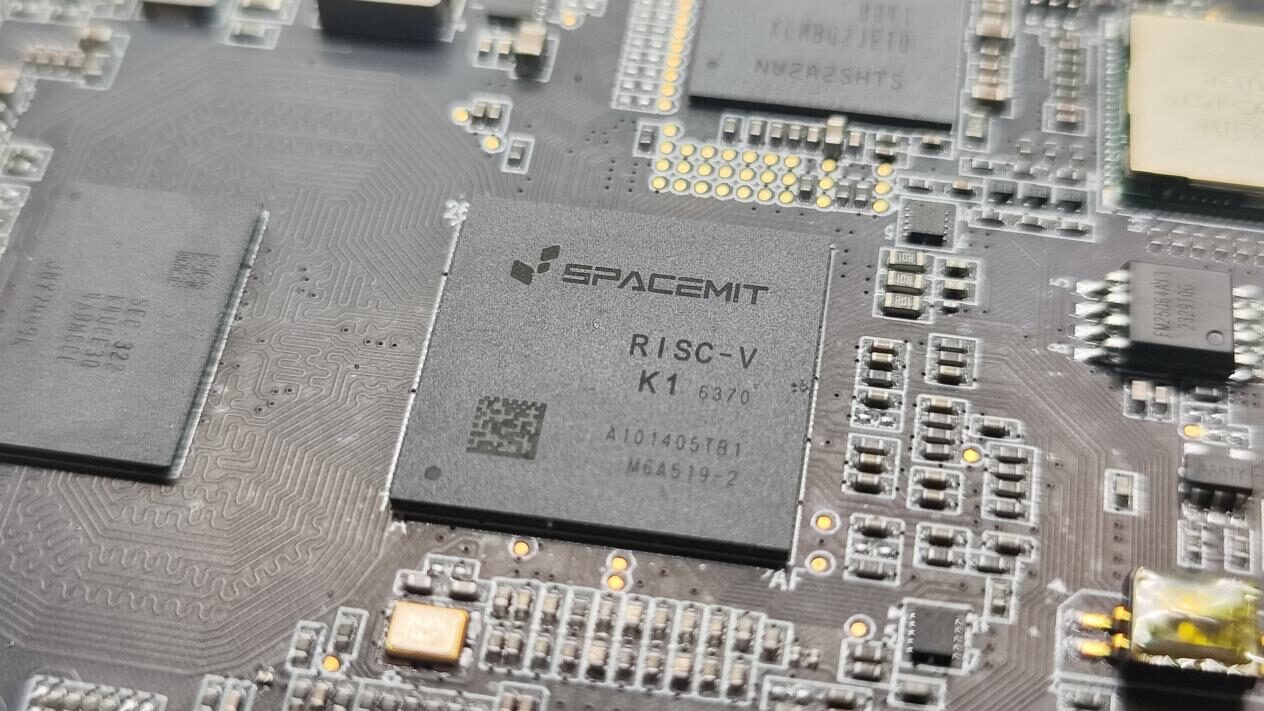Chinese startup launching RISC-V laptop for devs and engineers priced at around $300
It may not be the quickest AI development laptop, but it could get the job done.

Chinese startup SpacemiT has unveiled its next computer, a laptop based on the K1 octa-core RISC-V chip. It is not exactly a standard laptop, but the MuseBook, as it’s called, has features and capabilities aimed at hardware engineers, developers, and DIY enthusiasts. While no official launch date is available, it’s expected to be available soon at a relatively low price of $300.
The MuseBook looks vaguely like an Apple MacBook, primarily from the printed name at the bottom of its display bezel. A 14.1-inch IPS panel with a 1920 x 1080 resolution and 60Hz refresh rate is standard. The keyboard is more akin to Windows machines, but the dedicated Windows button has been replaced by a RISC-V button. There’s no news yet on what function that button might provide since the unit provided to CNX Software would not power on.



The laptop weighs in at 1.3kg and is approximately 18mm thick. It provides a MicroSD card slot, two USB-C ports, two USB 3.0 Type-A ports, a 3.5mm headphone jack, and an 8-pin header with pins for power, multiplexed I2C, UART, PWM, GPIO, and more. The full specifications for the K1 SoC are listed below:
| CPU | Octa-Core X60 64-bit RISC-V core (faster than Cortex-A55 in multi-core configuration) |
| GPU | Unnamed with support for OpenCL 3.0, OpenGL ES3.2, Vulkan 1.2 |
| VPU | H.265/H.264/VP9/VP8 4K encoding/encoding |
| AI accelerator | 2.0 TOPS AI NPU |
| Memory | Up to 16GB 32bit LPDDR4-2400MT, 32bit LPDDR4X-2666MT, Up to 10.6GB/S bandwidth |
| Storage | Supports SPI FLASH, eMMC 5.1, SDIO 3.0 SD Card, NVME(PCIe2.1 2x) |
| Display | MIPI-DSI and HDMI up to 1920×1440 @ 60Hz |
| Row 7 - Cell 0 | Support for dual display setups |
| Audio | 3X Mic-in |
| Camera | 8-lane MIPI-CSI in 4+2+2-lane or 4+4-lane configuration |
| Row 10 - Cell 0 | Single camera supports up to 16MP |
| Row 11 - Cell 0 | Supports three camera inputs |
| Connectivity | 2x GMAC |
| Row 13 - Cell 0 | 1x USB 3.0 (multiplexed with PCIe 2.1 x1) |
| Row 14 - Cell 0 | 1x USB OTG |
| Row 15 - Cell 0 | 1x USB HOST |
| Row 16 - Cell 0 | 5x PCIe 2.1 (x2+x2+x1 combined, 5Gbps/lane) |
| Row 17 - Cell 0 | 4x SPI, 7x I2C, 12x UART, 2x CAN-FD, 30x PWM |
| Power consumption | 3-5W TDP |
| Pakcage | FCCSP 17x17mm, 0.65mm pitch |
The laptop's storage includes up to 128GB of onboard eMMC flash memory, M.2 NVMe SSD options up to 1TB, and a MicroSD card slot. The K1 RISC-V System-on-a-Chip (SoC) is configured with up to 16GB of LPDDR4X RAM. Wireless networking connectivity is available via the installed RTL8852BE-based WiFi 6 module.



The MuseBook runs Bianbu OS, an operating system based on Debian and optimized for the K1 RISC-V SoC. Presumably, it will include common office software such as LibreOffice and the Chromium browser. It will also include optimized OpenCV, OpenBLAS, Slam Eigen, libpng, libjpeg, XNNPACK, and other algorithm libraries for development purposes.
If preferred, you can also install the Linux flavor of your choice or RTOS on the laptop. Of course, finding RISC-V packages in standard repositories might prove problematic.
| SoC | SpacemiT K1 octa-core X60 RISC-V core compliant with RVA22 (see full SoC specifications details above) |
| System memory | Up to 16GB 32bit LPDDR4-2400MT, 32bit LPDDR4X-2666MT |
| Storage | 32GB eMMC flash (default), option up to 128GB |
| Row 3 - Cell 0 | M.2 (PCIe 2.1 2x) socket for NVMe SSD up to 1TB |
| Row 4 - Cell 0 | MicroSD card slot |
| Display | 14.1-inch IPS display with 1920×1080 resolution, 60Hz refresh rate |
| Row 6 - Cell 0 | 72% NTSC (≈100%sRGB) Color gamut |
| Row 7 - Cell 0 | 250 nits brightness |
| Networking | RTL8852BE-based WiFi 6 module |
| Power supply | USB PD 3.1 Type-C port (65W power adapter) |
| Dimensions | 322.6 x 209.2 x 17.8mm |
| Weight | 1.36kg |
| OS | Bianbu OS by Debian, Ubuntu, Linux |
| Browser | Chromium |
Of course, this isn’t the first RISC-V laptop to come to market. We’ve reviewed the Sipeed Lichee Console 4A in the past, and there’s also the ROMA laptop. However, the K1 is the first RISC-V SoC to comply with the RISC-V Foundation’s RVA22 and 256-bit RVV 1.0 standards. While not exactly blazing fast compared to, for example, the Intel Core Ultra CPU, SpacemiT’s K1 SoC does provide 2 TOPS of AI computing power.
Get Tom's Hardware's best news and in-depth reviews, straight to your inbox.

Jeff Butts has been covering tech news for more than a decade, and his IT experience predates the internet. Yes, he remembers when 9600 baud was “fast.” He especially enjoys covering DIY and Maker topics, along with anything on the bleeding edge of technology.
-
jlake3 Replybut the dedicated Windows button has been replaced by a RISC-V button. There’s no news yet on what function that button might provide
What it does will depend on the desktop environment and/or application, but I'd expect it to be the "Super" key, which is the same binding the Windows key has under most Linux distros. Use of the Windows logo requires following Microsoft's branding terms, so Linux laptops and some custom keyboards/keycaps choose to replace it with either the word 'Super' or some alternative logo.
The DIY keyboard I typed this on actually has the letters "Win" written out as a workaround so they don't have to deal with the "Microsoft Windows Logo Key Logo License Agreement for Keyboard Manufacturers". -
martin-arace https://arace.tech/products/muse-book-risc-v-laptopReply
MuseBook is pre-order at Arace Tech for $299(8GB ram + 64GB eMMC), ship before 15th, July.
The SoC upgrades to M1, a higher performance version of the K1.